How to Upload From Premiere Pro to Youtube
Become started with Premiere Pro
For a long time, Adobe Premiere Pro (opens in new tab) was an also-ran in the non-linear editing market place. But recent controversial changes to Final Cutting Pro, plus the bundling of Adobe'due south tool with the Creative Cloud (opens in new tab), means that nowadays Premiere is everywhere.
In my opinion that'due south a great matter, as it'south one of the friendliest and fastest editing environments on the market place. And thanks to the Creative Cloud subscription model it'south getting updated with new features regularly. If you haven't used Premiere Pro for a few versions or are new to the earth of editing, it's well worth investigating.
- Read all our Premiere Pro articles here (opens in new tab)
Why information technology's gained traction
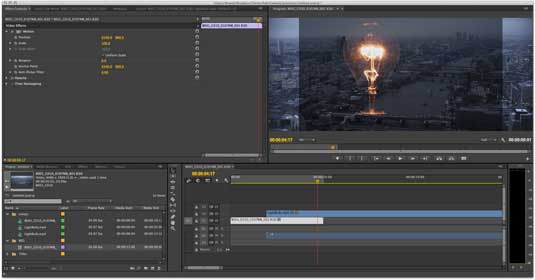
There are a couple of reasons why Premiere Pro has picked up some traction over the past couple of years. One is that Apple decided to change Final Cut Pro (for better or for worse) into Final Cut Pro Ten, which left a gap in the market.
Many Final Cut editors too had a copy of Adobe Production Premium for Afterward Furnishings and Photoshop, which happened to have a re-create of Premiere Pro bundled. This meant that a lot of editors tried Premiere Pro at the same fourth dimension equally Last Cut Pro X and found out that Premiere acted more like Final Cut Pro than Final Cut Pro X did. Plus in many means Premiere was easier to utilize than either version of Terminal Cut.
This was due to one primal factor: Premiere tin import pretty much any footage natively without transcoding and lets the editor just start playing with it. It doesn't even matter if the footage is at unlike frame rates: H264s from DSLRs can play on the same timeline as RAW footage from cameras from Carmine and Black Magic, with the simply restriction beingness the speed of your hardware due to the breakthroughs that Adobe has made with the GPU-enabled Mercury Playback engine.
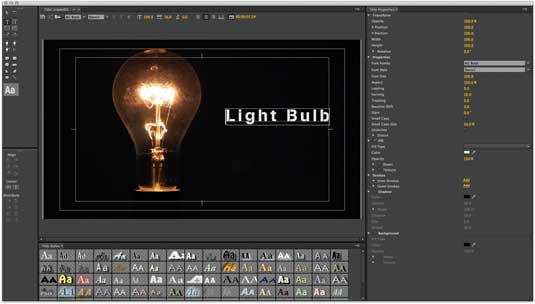
Accessed from the Title carte, the Titling tool in Premiere Pro is nigh a full application in itself. A championship is treated as a separate prune element, so exist sure to give a logical name to your championship clip - otherwise it can become lost in the project palette.
Setting text is a breeze, and works like a layout application like Pages or InDesign. Y'all tin can decide if you want to move your text or have it equally a still. Templates can then exist created from your original title which can and then be used to quickly propagate titles throughout a project.
Still, while text tin exist animated and edited just like any other clip, if you want very fine animation control over text such as kerning, After Furnishings is still the best option.
It works seamlessly with Afterwards Effects
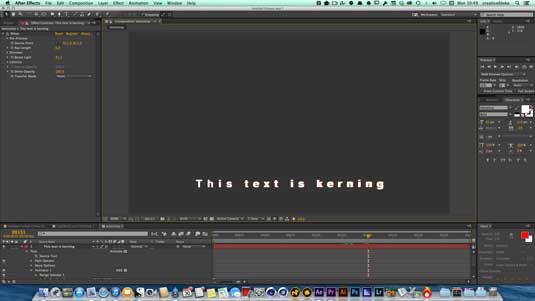
Using Subsequently Effects with Premiere is almost seamless thanks to the 'Dynamic Link' technology embedded inside both programmes. While there are defended import and export buttons for dynamic linking between Subsequently Effects and Premiere Pro, I often find that the best fashion is to drag a prune from 1 applications projection palette to another so I can check naming conventions.
When, for case, an After Effects graphics or title clip has been placed in Premiere, whatever changes that are fabricated in Afterwards Furnishings update to the clip in the Premiere Edit.
It's amazing how much fourth dimension is saved by using Dynamic Linking, as Proxy renders become a matter of the past. Nonetheless, the greatest do good is that Dynamic Linking allows the graphic and edit process to go interwoven, which leads to many more creative opportunities using both Premiere and After Furnishings to their full potential.
Advanced features
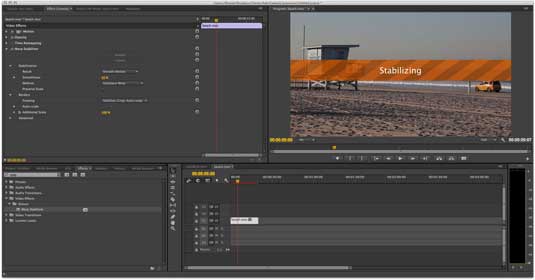
After Effects is not needed every time you demand to do anything 'fancy'. A wide range of effects, from time remapping to full colour command - which accept simply been augmented by the splendid Lumetri Looks colour effects in Premiere Pro 12.2 - are available within Premiere.
What used to exist advanced video features - such equally footage stabilisation, which used only be available in After Effects - are at present natively available in Premiere Pro without any demand for roundtripping. Adobe'south Warp Stabilisation uses what can only be described as 'magic' to remove virtually shake artefacts from footage and can brand nigh handheld footage look like it was shot on a steadycam.
While there is a lot that can exist washed with Premiere as a standalone application, there is then much more functionality bachelor through the cadre of helper applications that come with it.
Adobe Prelude acts as a first port of call when cataloguing footage from a photographic camera. It boasts advanced meta tagging features and gives y'all the power to get a basic edit, which can be finessed in Premiere. Prelude does an excellent task of keeping projects organised, which will increase your efficiency later down the line.
Other Artistic Cloud applications add together to a total film making toolset, including Adobe Story for collaborative screen writing, Adobe Speedgrade for Loftier Level Color Correction and Adobe Audience for working with audio.
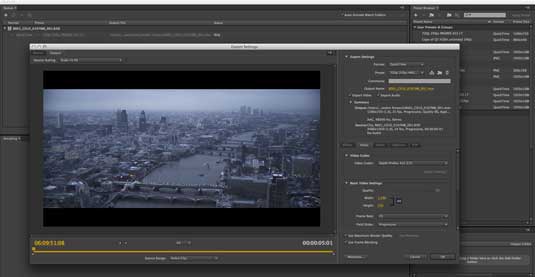
My personal favourite is Adobe Media Encoder, which can take video footage, After Furnishings Compositions and Premiere Pro Edits and batch-transcode your video for everything from a mobile device to the latest 4K TVs.
Thank you to the 'watch folder' function with Media Encoder everything can happen automatically, and as Adobe Creative Cloud'southward license allows the running of ii computers on either Mac or Windows, i can be running media encoder, while you exercise your creative work on your principal machine.
Windows users
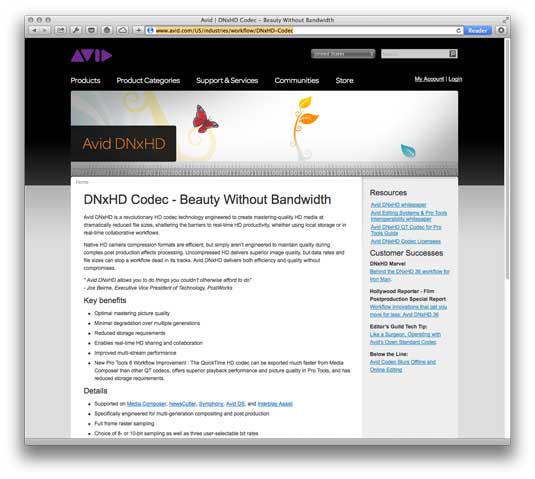
Premiere works across both Windows and Mac. So with the new Mac Pro seemingly a much more effective car for Concluding Cutting Pro X than Premiere - at least until Adobe adapt their Mercury engine to exist more OpenCL compliant - Premiere offers a painless way to switch for Mac Users looking to switch to Windows (yes it's happening…).
The only caveat working with video between Bone X and Windows is that most editing is done in Quicktime Prores, which can be a hurting to work with on Windows as y'all need a third-party paid-for transcoder. Personally, I've found the gratuitous Gorging DnxHD (opens in new tab) Codecs accept worked actually well on both OS X and Windows, used as an output codec (using the 10bit version) for broadcast piece of work, allowing me to end on either platform.
Nobody wants to have the grief of switching platforms, but software is more important than operating organization, and Premiere simply works no matter what arrangement it is being run on.
Conclusion
As part of Creative Cloud, Premiere Pro is the centrepiece of an end to cease professional video production pipeline. With so many new outlets for video online, it's worth exploring what this powerful but simple to grasp range of tools can add together to your creative options.
Words: Mike Griggs (opens in new tab)
Mike Griggs is a freelance concept 3D, VFX and motion graphics artist working across Tv set, exhibition and digital design.
Liked this? Read these!
- Create a perfect mood board (opens in new tab) with these pro tips
- The all-time 3D movies of 2013
- Download free textures: high resolution and fix to use now
What practice you prefer - Premiere or Final Cut? Share your thoughts in the comments below!
Related articles
Source: https://www.creativebloq.com/3d/get-started-premiere-pro-11410280
0 Response to "How to Upload From Premiere Pro to Youtube"
Post a Comment